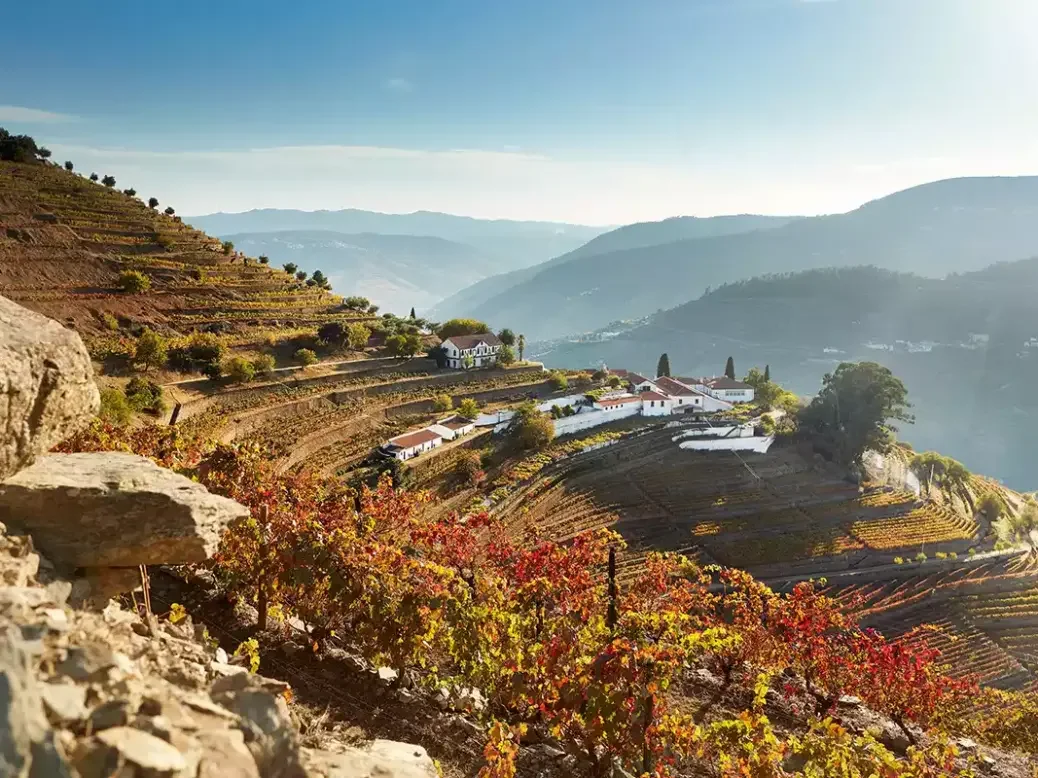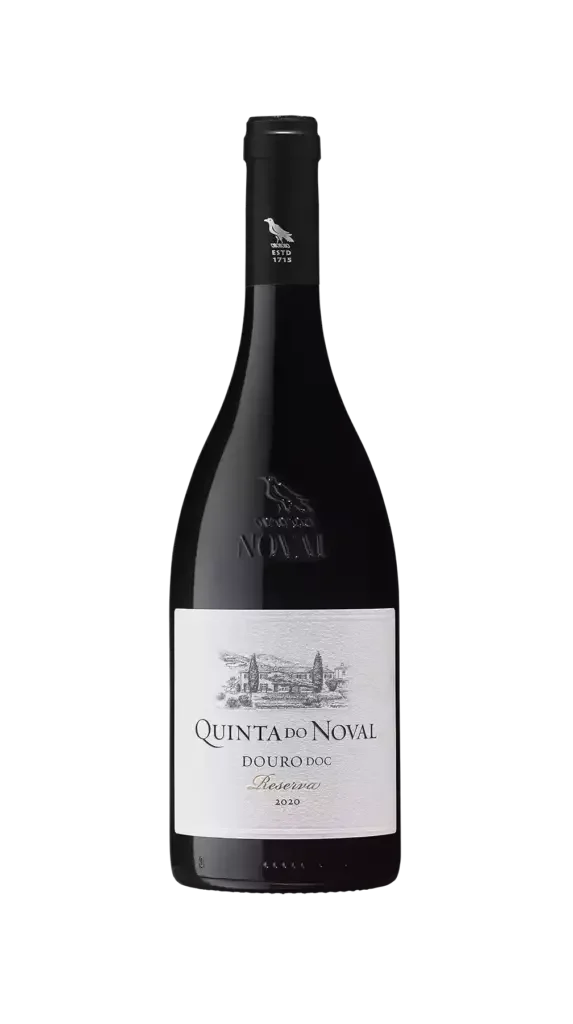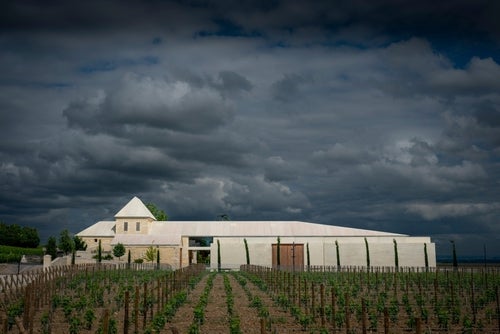
Quinta do Nova is increasingly adept at table wine, says Simon Field MW, after a tasting focused on the renowned Port producer’s fortified and unfortified portfolio.
The fact that Christian Seely, managing director of AXA Millésimes, has decided to focus on table wine at this year’s Quinta do Noval new-release tasting is instructive in itself. We are gathered in the Bull Room of the Swan Restaurant at the Globe Theatre on London’s South Bank. Bulls and swans must mean Zeus, or at the very least A Midsummer Night’s Dream. Midsummer is far behind us, but it is still unseasonably warm in London for mid-October. In Portugal, too, Christan tells us, though the vintage has not been without its challenges.
We are offered two takeaways about Portuguese table wine—ostensibly contradictory. The first is that there is increased interest in the category and its slew of indigenous grape varieties. The second is that the smaller growers in particular are struggling financially, with the moribund beneficio system of subsidies, which favors Port production, still skewering the fragile economic backdrop. This is why, for example, the Fladgate Partnership has recently been able to acquire some 100ha (250 acres) of vineyards but also why, returning to the positive side of the equation, the company, historically far from engaged in table wine, has decided to take the radical step of embracing it.
Christian does not attempt to deny the increasingly evident corporate polarization but is grateful that many of the growers who provide the grapes have not lost faith in such a broad palette of grape varieties. Of the white wines, he enthuses, “I like the blends, and I like the fact, counterintuitive, that one can make such elegant, mineral wines from such a hot area. Acidification is seldom used.” He advises that he is experimenting with whites at his own property, Quinta do Romaneira—among them, Viosinho and the aromatic Fernão Pires, but also oddities such as Boal de Douro, which, he reveals, is a local synonym for Semillon. Otherwise, there is not an international grape variety in sight.
A revitalized range
What we do have are revitalized ranges, in both colors—from Cedro, which I always used to find rather “hot” and unsubtle, and Noval itself. Now there is subtlety aplenty, not to mention grape varieties aplenty, sometimes summarized on the tasting sheet as a field blend, such is the innate complexity of historical co-plantation. The reds, for all that, tend to be bedrocked by Touriga Nacional, an increasingly modish grape, and it is also noticeable that while French oak has not fallen out of favor for the senior labels, no longer does it presume to intrude. Increased production for Cedro reflects both the more ambitious sourcing and the fact that new export markets are being opened up—the UK consumer singled out by Christian, somewhat waspishly, as something of a laggard in this respect. The Reserva range is from estate fruit only and is thus produced in more modest volumes.
We are also treated to the latest outings from the recent Terroir Series, a fairly self-explanatory concept that is designed to showcase outstanding parcels. The contrast between the Passadouro and the Marka, where many vines date from the 1930s, is clear, the schist-fed aromatics of the former especially appealing. The vertical ladder of aspiration thus now covers the regional (Cedro), the greater estate (Noval), and the single vineyard (Terroir Series). The stylistic differences evidenced over and across these three levels are instructive indeed. The three vintages of the Noval Reserva, for example, are all astonishingly different. One common thread appears, however, to be the overall superiority of the more recent releases, regardless of vintage. This is encouraging for a somewhat forgotten category and justifies the spirit of optimism that now buoys it.
As for the fortified wines, these are certainly not “forgotten,” but here, too, there has been a subtle shift in emphasis, with the Tawny labels becoming increasingly popular. “I love Tawny Port and have always taken it seriously,” Christian affirms, explaining that he has been laying down significant volumes since 1995 and that he has tilted his favors toward the Colheita bottlings. “There is strong demand, and given that Colheita can be approached when between 12 and 25 years of age, its commercial raison d’être is easier to fathom.” He hasn’t yet bottled a Very, Very or a 50-year-old, the latest addition to the Tawny canon, “but I certainly could,” he reveals. There will always be a place for the generic 10- or 20-year-old Tawny, he insists—“They flow consistently, like the Thames,” he says, pointing toward the river that runs beneath us. But the excitement of the Colheita is more interesting, he maintains, capturing the character of a specific year. This observation is borne out by a comparison between the two current releases—one a child of a cool year (2012), the other enjoying the much warmer backdrop of 2009.
And so, to the Vintages, and what Christian is happy to concede is his “rather eccentric” approach to a declaration. Since 2011, he has declared every year under Noval colors, but not the Nacional—there was no Nacional at all from 2004 to 2011, he reminds us. Nature has thereafter been kinder to this ungrafted 1.7ha (4.2-acre) plot, it seems. And that includes 2021, otherwise seen as one of the more challenging of recent years. This is a superb duo—still the crown jewels of a range that increasingly captures and celebrates the vinous diversity offered by the magnificent Douro Valley.
Tasting Quinta do Noval
The Swan, Globe Theatre, London; October 10, 2023
2022 Cedro do Noval Vinho Branco Douro DOC
An object lesson in blending, both of grape varieties and of provenance, with only a minority shareholding from the quinta itself. The assemblage is based on oak-fermented Viosinho, which makes up 47% of the blend and lends texture and depth; thereafter, complexity comes courtesy of five other varieties, the most influential being Gouveio and Rabigato, all five fermented in stainless steel. There is a flinty, edgy note here, a long way from the rather ponderous Cedros of old, and the vibrant acidity (none of it added) is impressive in such a warm year, needing only to bed in a little more, structurally. Other than that, impressive. 89
2022 Quinta do Noval Reserva Vinho Branco Douro DOC
Unlike the Cedro, the Reserva (the label was started in 2019) is all sourced from the quinta itself and is made in significantly smaller volumes. The 48% of Viosinho lends weight and concentration, with notes of fig and tobacco underpinning the architectural foundations. The 52% of Gouveio proves to be the perfect partner, lending a floral lift, with notes of verbena and fennel and a marked salinity at the back of the palate. This is an intriguing wine, with a real sense of place, despite the 50% new (French) oak employed. 92
2021 Cedro do Noval Vinho Tinto Vinho Regional Duriense
The 20% of Syrah is the culprit here—by which I mean, the reason why this is not a DO wine. It is also the culprit in terms of being responsible for textural elegance and floral lift, itself perfectly complementary to the 40% of Touriga Nacional. The balance is shared by Touriga Francesa and Tinta Roriz. Christian describes Syrah as “a chameleon grape and one that is perfectly suited to the Douro.” His experiments with Cabernet came to nothing; he describes it as “vulgar,” an epithet that presumably he would not use in reference to the Cabernet Sauvignon at Château Pichon Baron, which he runs in Bordeaux. He is also impressed with Petit Verdot, “a monster” that will make its debut in the 2022 wine. We compare the cool ’21 with the riper ’20: the ’21 is floral and lifted, elegant and spicy; the 2020 has more staying power, darker fruit, and a hint of smoke. They are strikingly different; Cedro is clearly not to be a brand where consistency is the cynosure—and it is all the better for that. 90
2020 Quinta do Noval Reserva
The Reserva is a DOC and therefore contains no “experimental grapes.” Some 40%, however, is made from a field blend; Christian reels off an impressive list of indigenous varieties, some of which I know, many of which I don’t. But none is experimental, that’s for sure. Touriga Nacional makes up the 60%. We try three different vintages, and as with the Cedro, there are marked differences above and beyond vintage variation. The 2018 seems touched by Brett and closed down a little on the finish. The 2019 is deep, smoky, and beautifully composed. This, the 2020, is a delight, incredibly energetic for such a warm and dry year, with the focused tannins almost dancing across the palate. Cashmere tannins, per Sarah Ahmed, who is sitting next to me. Christian makes the fascinating observation that some of the grapes in the field blend may not have been completely ripe when they were picked; this sharpens the acidity and innate tension, which sit so well. Tar, bay leaf, blueberry, and herbs are all evidenced, alongside distinctive Portuguese notes of esteva (gum rockrose) and pine. Very distinct, very expressive, and in no way compromised by a year in French oak, 40% of which is new. 92

2020 Quinta do Noval Terroir Series Vinhas do Passadouro Douro DOC
A magisterial deep purple, with distinctive and haunting aromatics of spice, fennel, loganberry, and woodsmoke. In the mouth, the wine is finely balanced, with beautifully tapered tannins and really impressive balancing acidity, courtesy of the distinctive gray and red schist soils, which Christian describes as friable. The dark fruit takes center stage, supported by notes of licorice, fig, and bitter chocolate. All-pervasive, however is the lifted aromatic, sauvage and beguiling. This is a superb debut that could not do more to underline the purpose of this new family of wines. Aged in French barriques, 90% new, for 12 months. 94
2019 Quinta do Noval Terroir Series Vinhas da Marka Douro DOC
Marka is the family property of Carlos Agrellos, the winemaker for the whole Noval group. His family has been making wines from this vineyard, located at 650ft (200m) above the Douro, since the 1930s. The wine is considerably less demonstrative than the highly aromatic Passadouro and maybe suffers a little in comparison. With air and the luxury of a little contemplation, the tight-knit structure starts to articulate a complexity that should come as little surprise, given that there are more than 30 indigenous varieties in the blend. Lower notes, darker fruit, an almost gravelly texture, and impressive concentration; patience is sure to be rewarded here, given the poise of the matrix that interplays tannins (fine), acidity (none added), and the understated balletic lift. 91
2012 Quinta do Noval Colheita (RS 104g/l)
Both 2012 and 2009 are described as “current vintages,” and a comparison shows how vintage conditions can influence style, even in a relatively young fortified wine. The 2012, offspring of a cool season, is deft, hesitant almost, and with demonstrably less residual sugar than its riper, more exuberant sibling. A slightly dusty nose; the cobwebs are soon replaced by nutmeg, dried apricot, and citrus peel—even a hint of honey cake. The noble oxygenation weaves its way into the palate with hints of white tobacco, cinnamon, and molasses. This will soften over the next three or so years and then plateau for at least a decade. 89–91
2009 Quinta do Noval Colheita (RS 120g/l)
The 2009 is far more demonstrative, benefiting not only from the generous, sunny vintage but also from having reached the window of drinkability, which Christian describes for a “commercial” colheita as being between 12 and 25 years old. (What is a non-commercial colheita, I wonder… a centenarian, in all likelihood!) A deeper walnut color and an enticing aromatic of lavender, burned orange, and vanillin; beyond that, pressed leaf and white chocolate, even a hint of truffle. The sugar is already beautifully integrated, but nothing cloys or distracts from a purity of architecture and a deft, subtle volatility that, as the word suggests, is suitably uplifting. 91–93
2021 Quinta do Noval Vintage Port (RS 97g/l)
Another example of a vintage that was far from universally declared, 2021 was relatively cool but, as a result, enjoyed a long, teasing growing season, with marked diurnal differences key to the architectural potential of the wines, this one only just bottled, of course. The wine is dark and brooding, aromatically still reticent (notes of rose, blueberry, and spice already evidenced, however), and with a structure that might best be described as sinewy, muscular, and tight. Cassis, smoky tar, violets, and hints of bay leaf. The wine is sweet and forward, youthful vigor taking all before it. Straightforward, with red berries beyond the darker fruit, and vanillin from the wood. Nice length. 90–92
2021 Quinta do Noval Nacional Vintage Port (RS 104g/l)
Intense and brooding, near inscrutable at such an age—as it should be. I often underrate Nacional, tasting it blind in its youth. There is a resinous, sinewy, vise-like grip, which is almost sappy, such is its preternatural energy. The vines from this 1.7ha (4.2-acre) plot, located at the heart of Noval’s greater 155ha (383 acres), are ungrafted (old but not pre-phylloxera old). Their yield is far more parsimonious (12hl/ha compared to 28hl/ha for the Noval), the appeal of their benison far from demonstrative in youth. So, we just need to wait. The 2021, given the cooler vintage conditions, will probably open up rather more quickly than some, but that, of course, does not mean anytime soon. Today there is potpourri, bitumen, dried fruit, a hint of balsam, and tapenade, maybe. Tomorrow, it may well be different, minutely, and so on for many, many tomorrows. 93–95+






